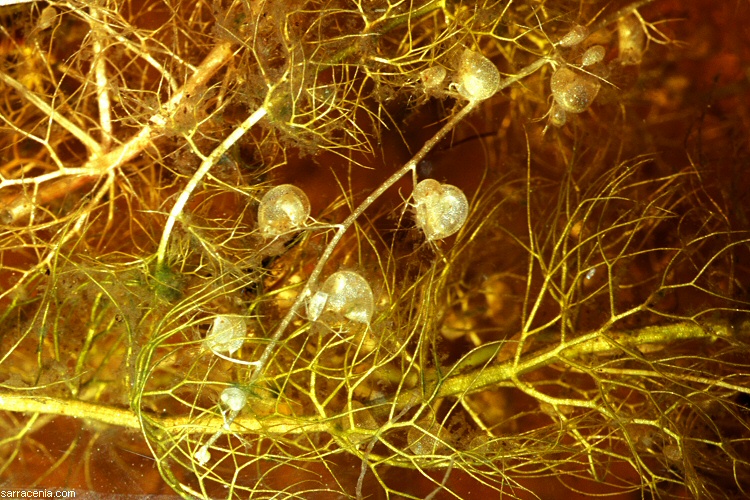
Shoot dimorphism:
The second feature I wished to document was the shoot dimorphism. After my
previous trip to the pond, I was bemused to discover that there were apparently no references to the dimorphism in the shoots of this species. Taylor,
who usually comments on everything, seems to have missed this in his monograph and in his published keys for North American
Utricularia. On the other hand, Taylor does mention that Utricularia geminiscapa can be differentiated
from
Utricularia macrorhiza (which it closely resembles) by the nature of the final segments of the multiply-divided leaves.
Notice how long and slender they are--especially on the leaves at the right side of this image? Compare them, for example,
to this Utricularia macrorhiza plant in Virginia. Not a very strong feature,
but maybe I can see it.
When not in flower, it is difficult to
separate U. geminiscapa from U. macrorhiza.
For example, I visited the herbarium at the University of Connecticut (in Storrs), and while the
Utricularia collections were surprisingly well-curated (so often the bladderworts are incorrectly identified)--there were
a great many Utricularia geminiscapa specimens which I think were incorrectly identified. (I think they were actually
Utricularia macrorhiza.) So I think there is a great deal not understood about these plants.
Is Utricularia geminiscapa rarer than we think? Or is it more common, and hiding among
Utricularia macrorhiza populations? I think this is an area for fruitful field research.
This photograph has an orange cast because I filtered my flash through several cm of the
very brown water that these plants live in. The lighting evokes the acid wetlands they live in.